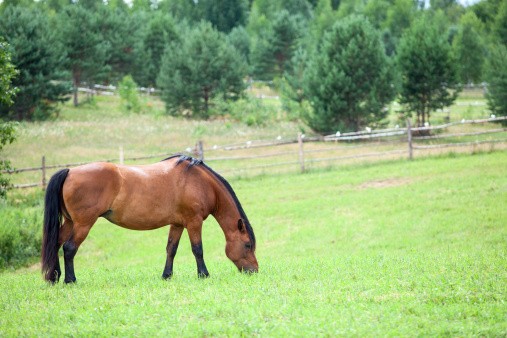How to Feed Horses With Gastric Ulcers

Equine gastric ulcer syndrome (EGUS) affects more than 80% of Thoroughbred racehorses and 30-50% of all foals and weanlings. Incidence is similarly high in performance horses.
Because diet plays such an important role in managing ulcers, Ingrid Vervuert, DVM, described feeding strategies for affected horses at the 2016 American Association of Equine Practitioners Convention, held Dec. 3-7 in Orlando, Florida. Vervuert is an Assistant Professor at the Institute of Animal Nutrition, Nutrition Diseases and Dietetics and the Faculty of Veterinary Medicine at the University of Leipzig, in Germany, where she focuses her research on equine nutrition and dietetics.
Risk Factors
Based on previous research, we know that horses without access to any type of feed for more than eight hours are at risk for developing ulcers. Other significant risk factors include forage intake of less than 1% of body weight, high starch intake, limited pasture access, stall confinement, non-steroidal anti-inflammatory drug administration, strenuous exercise, and transport stress, said Vervuert
Create a free account with TheHorse.com to view this content.
TheHorse.com is home to thousands of free articles about horse health care. In order to access some of our exclusive free content, you must be signed into TheHorse.com.
Start your free account today!
Already have an account?
and continue reading.
Written by:
Nettie Liburt, MS, PhD, PAS
Related Articles
Stay on top of the most recent Horse Health news with















